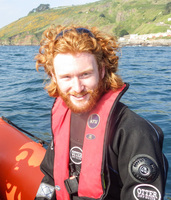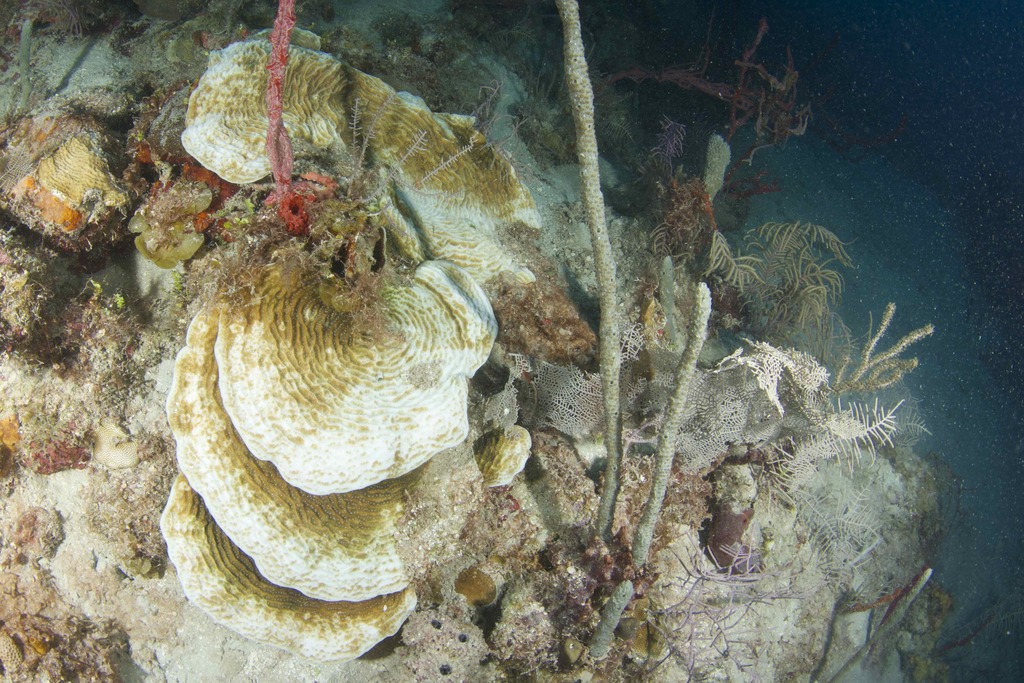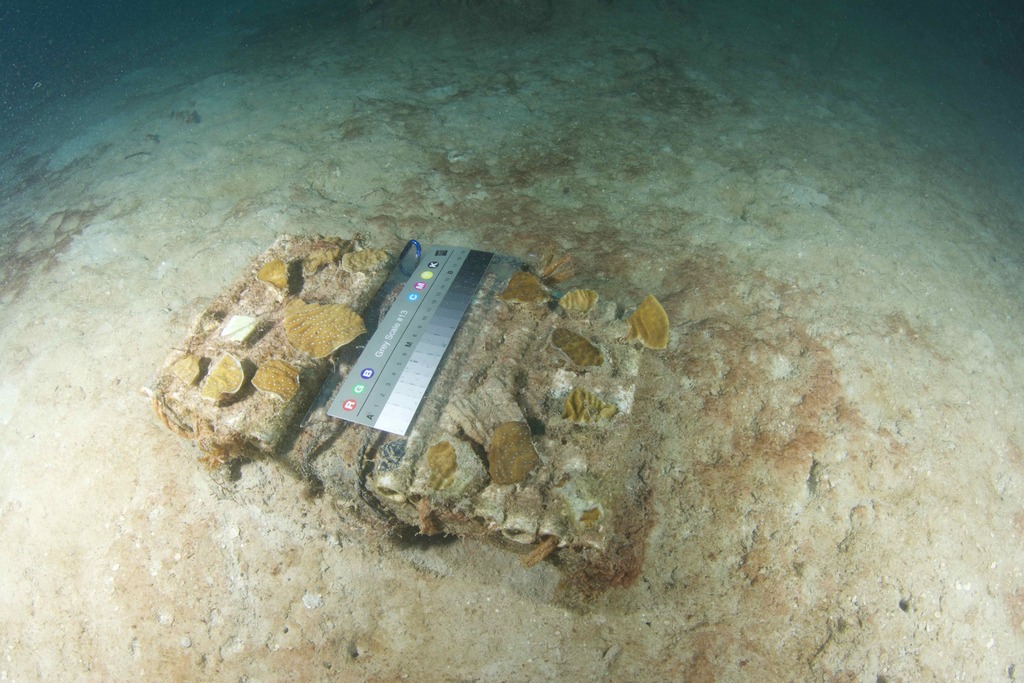Behind the science:
Experimental evidence for reduced mortality of Agaricia lamarcki on...
2018, August 29
Posted by Veronica Radice
Fields
Climate Change
Disturbances
Management and Conservation
Focusgroups
Scleractinia (Hard Corals)
Locations
Honduras - Bay Islands
Platforms
Rebreather
“Reciprocal transplant: Experimental evidence for reduced mortality on a mesophotic reef”
What was the most challenging aspect of your study (can be anything from field, lab to analysis)?
Sampling dives presented a challenge in terms of kit configuration. Dives were carried out on rebreathers with two bailout cylinders and fragments were transported in a home-made PVC container (Photo 3). Add to that hammers, chisels, and label writing for bagging samples and things got quite fiddly.
What was the most memorable moment in undertaking this study?
As most of the time was spent hovering over transplant stations, there weren’t any amazing wildlife encounters to share. There was a bitter-sweet moment diving on the complete experimental setup 6 weeks after the project started. When it became clear that the shallow coral on the transplant racks were bleaching, but the mesophotic racks still had their colour, we knew we would have something to write about. On the other hand, it’s never nice to see your study system bleach.
Which was your favourite research site in this study and why?
Three sites were involved in this study on Utila, Little Bight and The Maze as collection sites, and the house reef of Coral View for the experiment. Collection dives were far more fun than setting up and monitoring the experimental arrangement! As with the previous Behind the Science post, The Maze is my favourite site and gave me the deepest samples at 60m. In the shallows a network of trenches 10m deep, lined with coral, give the dive site its name. A wall interrupted by shelves extends well below 100m, with Agaricia beds coincident with the shelves. As the dive site faces into open ocean it provided us with the best chance of seeing rays, turtles, and other larger animals while waiting on decompression.
Other than your co-authors, with whom would you like to share credit for this work?
There are always other divers hiding in the background of a project. I need to thank Grace Young for her patience, following me on collection dives and being willing to sit on a sand patch bored while I fixed the transplant racks on the house reef. Later on members of the Thinking Deep team helped with occasional monitoring of the transplant racks: Edd Stockdale, Anna East, Erika Gress, Alicia Hendrix, Ally McDowell, and Luke Shepherd. Beyond the divers the entire field season wouldn’t have been a success without those who helped with logistics: the Bay Islands Conservation Association, the Coral View Research Centre, and ‘G’ for kit care.
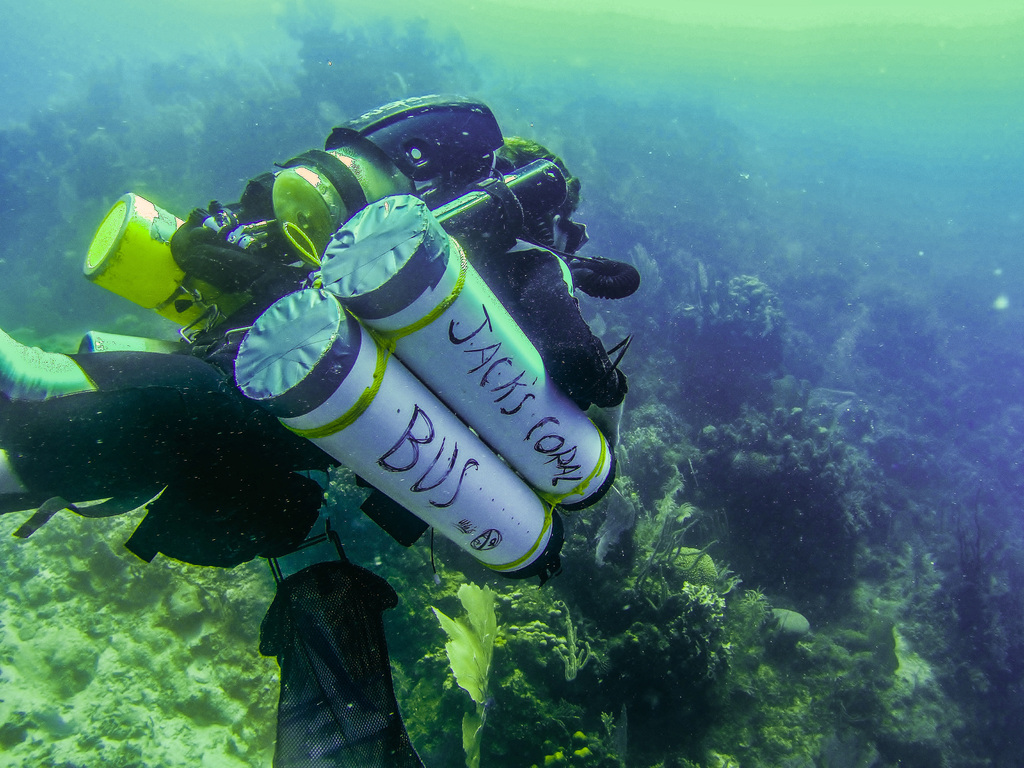 Collected coral fragments were stored in zip-lock bags within opaque PVC tubing to minimise light related stress in transport. Dive site: the Maze.
(C) Grace Young
[CC BY-NC 4.0]
Collected coral fragments were stored in zip-lock bags within opaque PVC tubing to minimise light related stress in transport. Dive site: the Maze.
(C) Grace Young
[CC BY-NC 4.0]
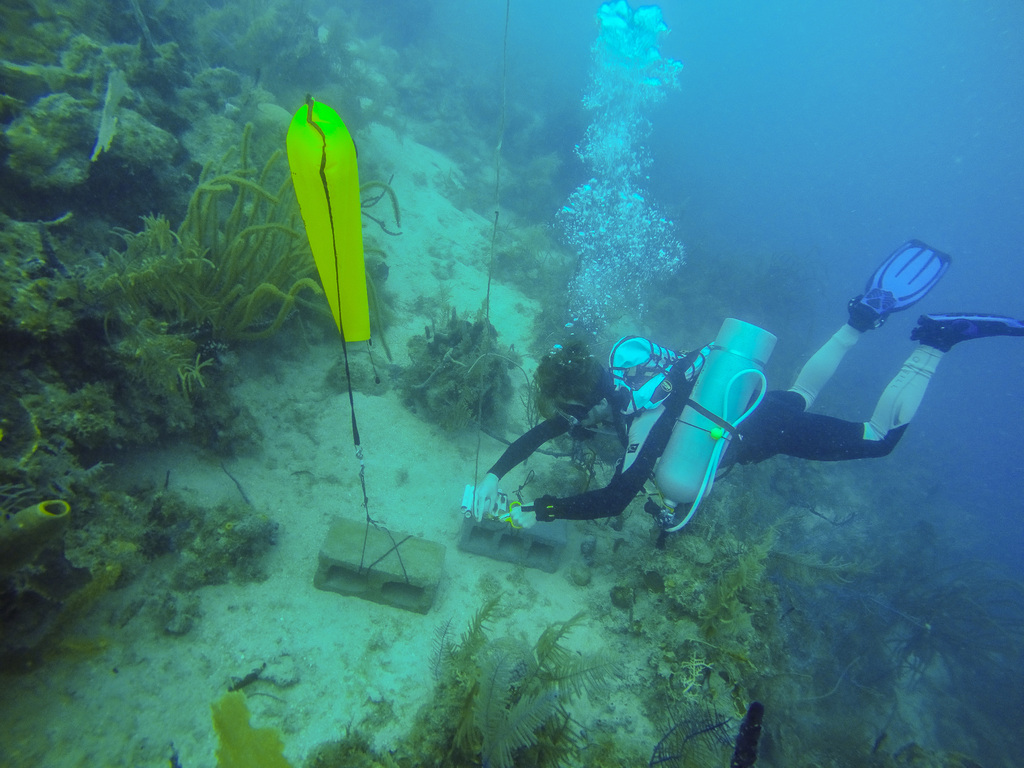 Jack Laverick placing concrete blocks on the house reef to set up transplant stations.
(C) Grace Young
[CC BY-NC 4.0]
Jack Laverick placing concrete blocks on the house reef to set up transplant stations.
(C) Grace Young
[CC BY-NC 4.0]
Any important lessons learned (through mistakes, experience or methodological advances)?
It always pays to be flexible. These transplants were originally intended for a year long physiology experiment. Unfortunately the fragments didn’t survive long enough for the intended project to happen. We saw the bleaching event start and decided to monitor the condition of the racks on the off chance we would find something. Being able to change plans on the fly in a field season saved a thesis chapter for me. We were also just a little lucky that the experimental setup was completed and apparently healthy six weeks before the bleaching came to Utila.
Can we expect any follow-up on this work?
We don’t have any plans as yet, but monitoring work on mesophotic reefs will be very important as we go forward. One of our challenges is needing to visit our study sites from the UK. Our observations stopped when our field season ended. It is possible, however, that mortality could have been delayed on mesophotic reefs rather than totally absent. Research teams who are able to observe their system all year round, and respond to bleaching events, are in a very valuable position! The natural next step is for researchers in such a position to watch for any delayed responses on MCEs.
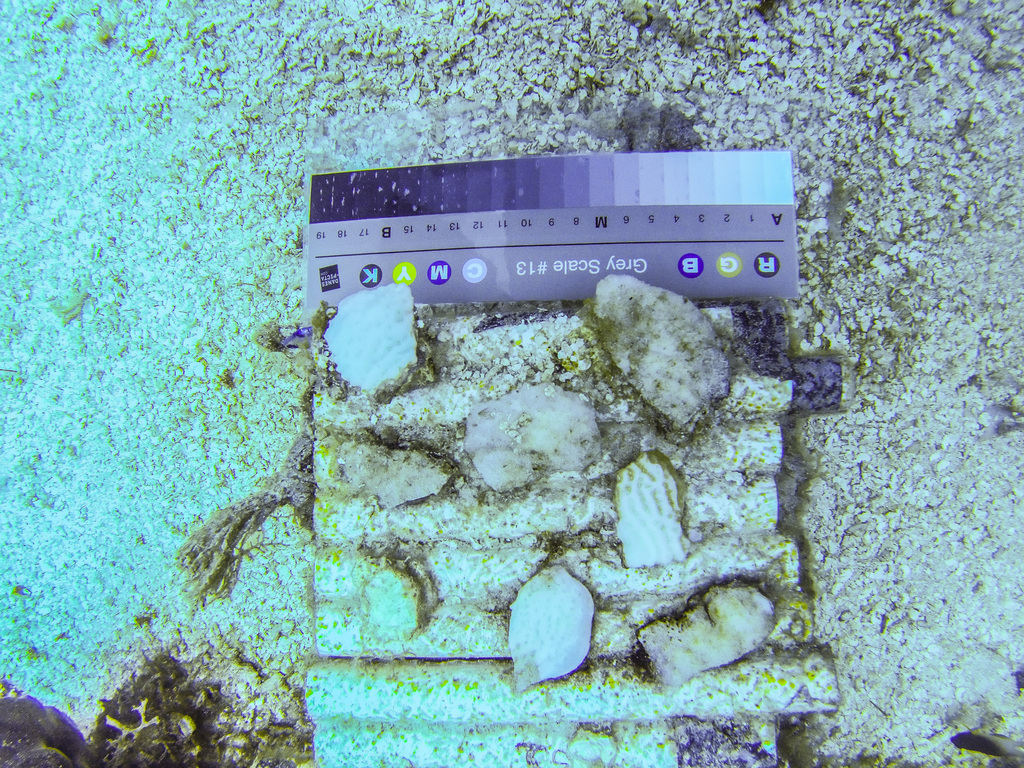 An example transplant rack after 8 weeks in shallow water. All fragments are either bleached or fouled.
(C) Jack Laverick
[CC BY-NC 4.0]
An example transplant rack after 8 weeks in shallow water. All fragments are either bleached or fouled.
(C) Jack Laverick
[CC BY-NC 4.0]
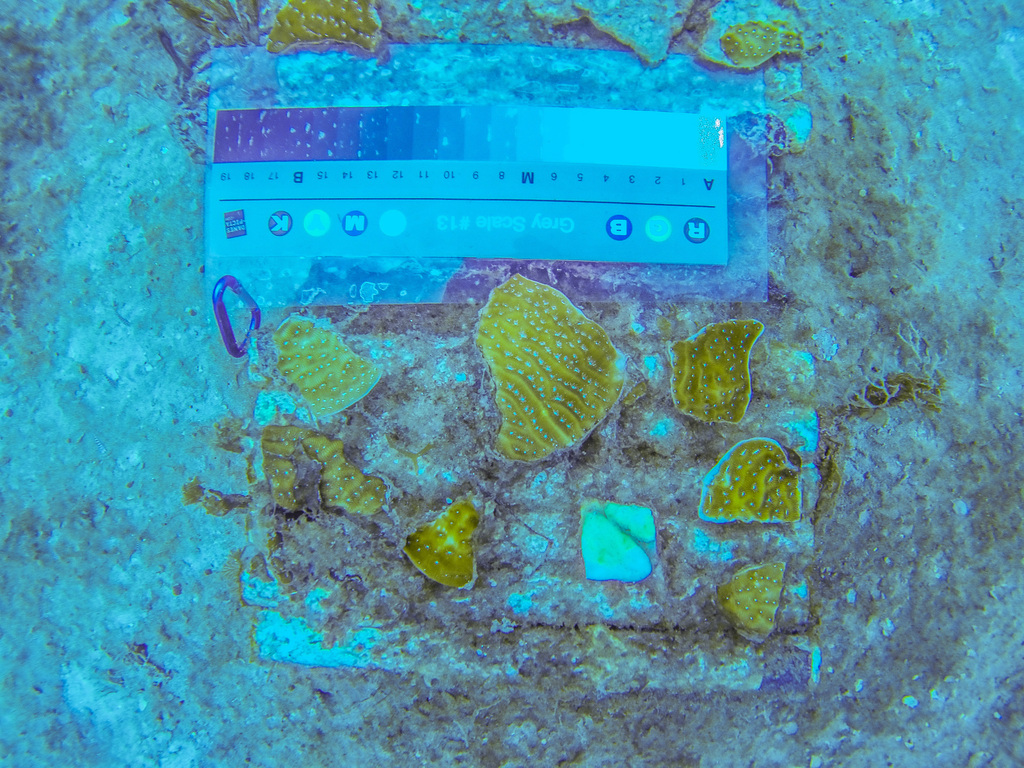 After 8 weeks at mesophotic depths a notable number of fragments have retained their pigment. The fragments in both photos were collected from the same site.
(C) Jack Laverick
[CC BY-NC 4.0]
After 8 weeks at mesophotic depths a notable number of fragments have retained their pigment. The fragments in both photos were collected from the same site.
(C) Jack Laverick
[CC BY-NC 4.0]
Featured article:
|
|
Experimental evidence for reduced mortality of Agaricia lamarcki on a mesophotic reef | article Laverick JH, Rogers AD (2018) Mar Environ Res 134:37-43 |
|
